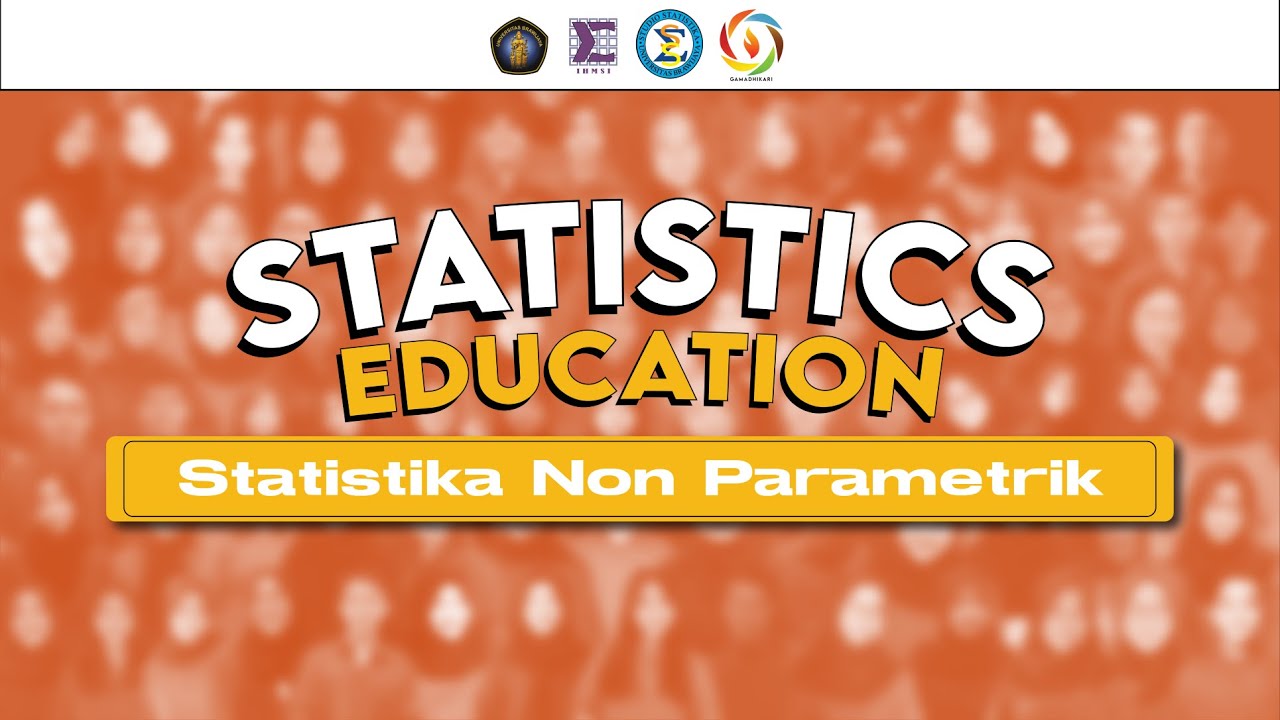The Secret Weapons of Research: Statistical Tools Revealed
Summary
TLDRThis video covers essential statistical tools used in research, focusing on parametric and nonparametric tests. It explores the differences between these two types of tests, highlighting when to use each based on data assumptions. The video also dives into specific statistical formulas such as t-tests, ANOVA, regression analysis, and the chi-square test. Furthermore, it discusses concepts like reliability and validity testing, sample size computation, and the importance of assumptions for parametric tests. With real-world examples, this guide offers a clear understanding of these critical statistical methods and their applications in research.
Takeaways
- 😀 Parametric tests are generally more reliable than nonparametric tests, as they use actual data values, but they require certain assumptions to be met.
- 😀 Nonparametric tests are more flexible and do not require assumptions, but they may be less reliable in certain situations.
- 😀 Shapiro-Wilk and Kolmogorov-Smirnov tests are commonly used to check the normality of data before using parametric tests.
- 😀 Homogeneity of variance is another assumption for parametric tests, and the Levene's test is used to check if two variables have equal variance.
- 😀 T-tests for independent samples are used to compare means between two independent groups, while nonparametric alternatives like the Mann-Whitney U test are used when assumptions are not met.
- 😀 T-tests for paired samples compare the means of two paired groups, with the Wilcoxon signed-rank test as the nonparametric alternative.
- 😀 ANOVA compares the means of two or more independent groups, and when assumptions are not met, the Kruskal-Wallis test is used as the nonparametric alternative.
- 😀 Repeated Measures ANOVA is used to compare means for two or more paired groups, and the Friedman's ANOVA is its nonparametric counterpart.
- 😀 Regression analysis determines the relationship between two continuous variables, and it allows for predictions, while Pearson's R measures the strength of the relationship between them.
- 😀 For categorical variables, the chi-square test of independence is used to measure the relationship between them, unlike Pearson's R, which works for continuous variables.
- 😀 For testing reliability and validity of questionnaires and tools, Cronbach's Alpha is preferred over other methods like Kuder-Richardson formulas, as it offers greater flexibility and accuracy.
Q & A
What is the primary difference between parametric and nonparametric tests in research?
-Parametric tests provide more reliable results as they make certain assumptions about the data, such as normality and homogeneity of variance. Nonparametric tests, on the other hand, do not require these assumptions and are less reliable, but they are used when the data doesn't meet the criteria for parametric tests.
What is the role of assumptions in parametric tests?
-Parametric tests require that the data meets certain assumptions, such as normal distribution and equal variance. If these assumptions are violated, the results from a parametric test may be unreliable, and a nonparametric test may be used as an alternative.
How can we check if the data is normally distributed before applying a parametric test?
-To check if data is normally distributed, we can use tests like the Shapiro-Wilk test or the Kolmogorov-Smirnov test. The Shapiro-Wilk test is more specific, while the Kolmogorov-Smirnov test is more general.
What is the purpose of transforming data in research, and when is it necessary?
-Data transformation is used to make the data normal when it fails the normality test. While it can sometimes improve the data’s normality, there is no guarantee that it will always make the data perfectly normal.
What does homogeneity of variance mean in the context of parametric tests?
-Homogeneity of variance means that the variance of the data for the different groups being compared is equal. In cases where the variances are not equal, tests like the Levene’s test can be used to assess variance equality.
What statistical test would be used to compare the means of two independent groups?
-The t-test for independent samples is used to compare the means of two independent groups. If the assumptions for parametric tests are not met, a nonparametric alternative like the Mann-Whitney U test is used.
What is the difference between the t-test for independent samples and the t-test for paired samples?
-The t-test for independent samples compares the means of two independent groups, while the t-test for paired samples compares the means of two related or matched groups, such as measurements from the same group before and after an intervention.
What alternative is used when the assumptions for a t-test for paired samples are not met?
-If the assumptions for a t-test for paired samples are not met, the nonparametric alternative is the Wilcoxon signed-rank test.
What is the purpose of Analysis of Variance (ANOVA), and how does it differ from the t-test?
-ANOVA is used to compare the means of two or more independent groups, whereas the t-test is limited to comparing two groups. ANOVA is used when there are more than two groups to compare.
When would you use a regression analysis over Pearson’s correlation coefficient?
-Regression analysis is used when you want to predict the value of one variable based on another, with a clear distinction between dependent and independent variables. In contrast, Pearson's correlation measures the strength of the relationship between two continuous variables without implying causality.
Outlines

Этот раздел доступен только подписчикам платных тарифов. Пожалуйста, перейдите на платный тариф для доступа.
Перейти на платный тарифMindmap

Этот раздел доступен только подписчикам платных тарифов. Пожалуйста, перейдите на платный тариф для доступа.
Перейти на платный тарифKeywords

Этот раздел доступен только подписчикам платных тарифов. Пожалуйста, перейдите на платный тариф для доступа.
Перейти на платный тарифHighlights

Этот раздел доступен только подписчикам платных тарифов. Пожалуйста, перейдите на платный тариф для доступа.
Перейти на платный тарифTranscripts

Этот раздел доступен только подписчикам платных тарифов. Пожалуйста, перейдите на платный тариф для доступа.
Перейти на платный тарифПосмотреть больше похожих видео
5.0 / 5 (0 votes)






